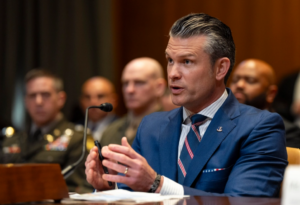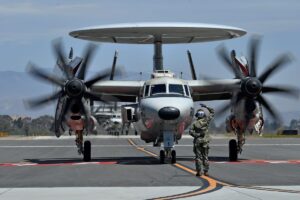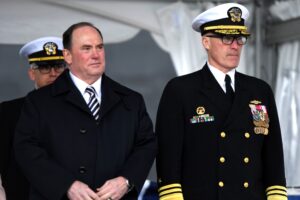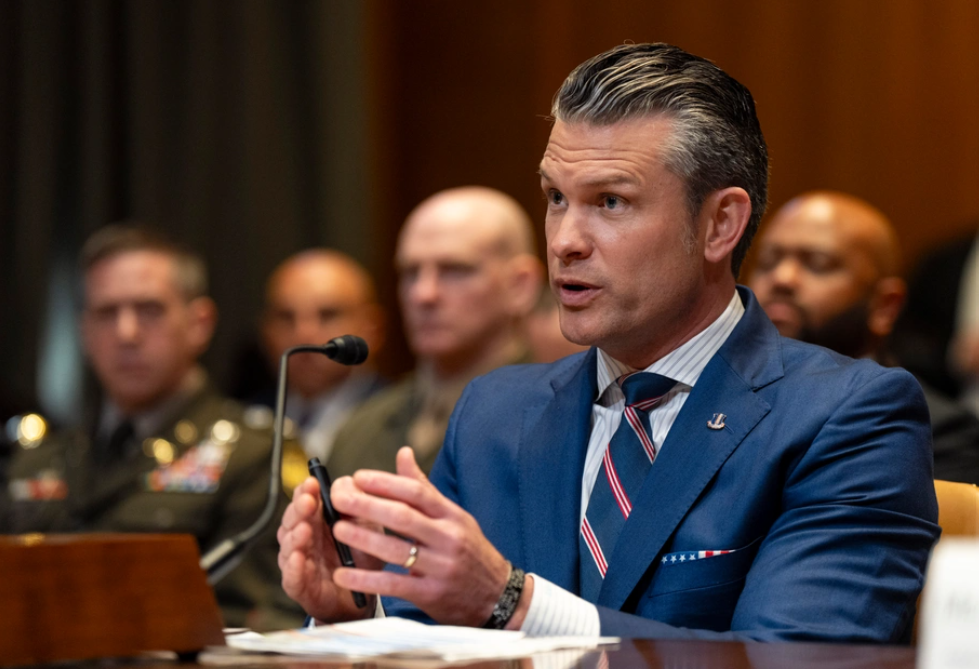Defense Daily
-
 Space
SpacePlanet Nabs NATO Award For Geospatial Intelligence
Planet Labs [PL] on Thursday said it has won a “seven-figure contract” from NATO to provide geospatial intelligence and related analytics for daily Earth observation of the alliance’s areas of […]
-
 Business/Financial
Business/FinancialMuon Space Adds $90 Million In Funding Round; Acquires Spacecraft Propulsion Startup
Satellite developer and manufacturer Muon Space on Thursday said it has closed an oversubscribed $89.5 million Series B1 funding round, bringing its total Series B round to $146 million as […]
Tagged in: -
Thursday, June12, 2025
- DoD Places Big Bets On Reconciliation Funds For Major Programs In FY ‘26, Lawmakers Offer Caution
- DoD Looks to End USAF E-7 in Fiscal 2026 Budget Request
- SASC Chairman Lambasts Trump Navy Budget, Says Assumes Reconciliation To Pay For Some Annual Appropriations
- Sierra Space Launches Defense Unit With Plans To Expand Manufacturing
- SecNav ‘Simpatico’ With Warren On Right To Repair, Reforming IP Rights
- Will Section 301 of SPEED Act Decrease or Increase DoD Contract Prices?
- Lynn Makes Case To Strengthen Defense Industry’s Middle Tier
- Air Force May Build Microreactor at Eielson AFB, Alaska
- Voyager Goes Public As IPO Raises $383 Million
-
 Congress
CongressDoD Places Big Bets On Reconciliation Funds For Major Programs In FY ‘26, Lawmakers Offer Caution
The Pentagon is placing big bets that the eventual reconciliation bill will provide large portions of the fiscal year 2026 funding for some major weapons programs such as the Golden […]
-
 Air Force
Air ForceAir Force May Build Microreactor at Eielson AFB, Alaska
The Department of the Air Force and the Defense Logistics Agency’s energy office plan to award California-based Oklo, Inc. [OKLO] a 30-year, firm fixed price contract for a microreactor, likely […]
-
 Navy/USMC
Navy/USMCSASC Chairman Lambasts Trump Navy Budget, Says Assumes Reconciliation To Pay For Some Annual Appropriations
In his opening statement during a hearing of Navy Department officials, the chairman of the Senate Armed Services Committee (SASC) on Tuesday strongly criticized the Trump administration’s fiscal year 2026 […]
Tagged in: -
 Business/Financial
Business/FinancialVoyager Goes Public As IPO Raises $383 Million
Voyager Technologies [VOYG] on Wednesday went public after pricing its initial public offering at $31 per share, $2 higher that the company’s top estimate announced a week ago, raising $383 […]
-
 Air Force
Air ForceDoD Looks to End USAF E-7 in Fiscal 2026 Budget Request
The Pentagon is looking to end the U.S. Air Force (USAF) E-7 Wedgetail airborne early warning aircraft by Boeing [BA] in the Trump administration’s upcoming full fiscal 2026 budget request. […]
-
 Navy/USMC
Navy/USMCSecNav ‘Simpatico’ With Warren On Right To Repair, Reforming IP Rights
The Secretary of the Navy on Tuesday made clear he agrees with Sen. Elizabeth Warren (D-Mass.) on the need for the Navy to have a right to repair and reform […]
-
 Business/Financial
Business/FinancialSierra Space Launches Defense Unit With Plans To Expand Manufacturing
Commercial space company Sierra Space has created a new business unit focused on its growing defense business, and as part of the shift is expanding its manufacturing capacity to meet […]
Tagged in:

